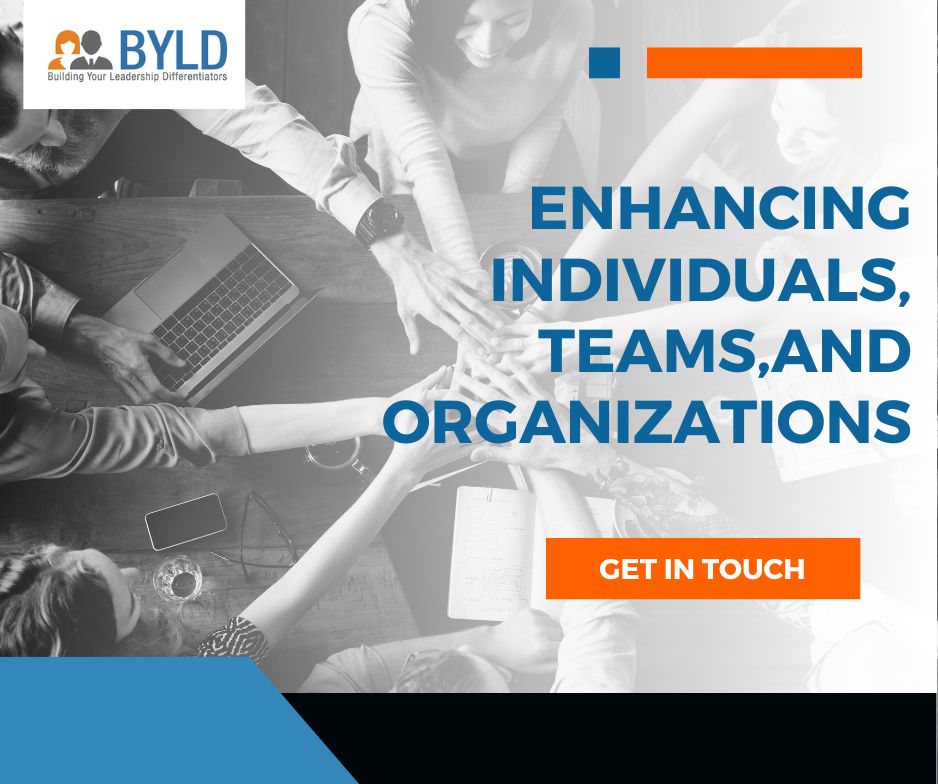
Corporate Gamification Strategies That Actually Improve Productivity
- August 4, 2025

Companies are always looking for new ways to keep their workers interested, inspired, and busy in today’s business world. For example, corporate gamification is a new way of doing things that uses game-like features like points, rewards, tasks, and leaderboards in non-game settings, like the workplace. These gamification examples can be seen in everything from onboarding to performance management.
Gamification is no longer just a trendy word; it’s a powerful tool that businesses that want to stay ahead of the curve can use. It keeps workers interested in boring chores, promotes healthy competition, and gives them a sense of accomplishment. Studies have shown that gamified settings can make people 48% more engaged and 36% more productive. It’s no wonder that corporate gamification in the workplace is becoming very popular across all fields. Some of the best gamification examples come from companies that have used it to transform workplace gamification into measurable success.
But workplace gamification doesn’t mean turning your office into a game arcade. Instead, it means using psychological triggers and smart design to get employees to act in ways that help the business reach its goals. A well-thought-out corporate gamification strategy can change how your employees interact with tasks, technology, and each other. This is true whether you’re trying to improve hiring, streamline sales, or improve training programs using smart gamification examples.
What is gamification, really? Why does it work so well in business settings? How can you use corporate gamification effectively? What mistakes should you avoid when implementing workplace gamification? We’ll also look at some real-life gamification examples and tell you about BYLD Group, a company that specialises in developing leaders and making business training more fun with the help of corporate gamification.
What is Gamification?
What does gaming mean? At its heart, gamification is the process of adding things that are usually found in games to places that aren’t games, like competition, challenges, rules of play, rewards, and getting points. When used in a business setting, corporate gamification means using these ideas to change and improve how employees behave, learn, and do their jobs.
Think of gamification examples like leaderboards that show how well salespeople are doing, badges for finishing training lessons, or point systems that reward people who work together and come up with new ideas. These aren’t just extras that are fun; they’re examples of carefully thought-out corporate gamification strategies that increase engagement, boost productivity, and make sure that everyone is working towards the same goals.
In simple words, workplace gamification turns normal business tasks into chances to learn and grow. When workers are rewarded for finishing chores, making targets, or picking up new skills, they are more likely to stay motivated and interested in their jobs. When you do things that might otherwise feel boring or repetitive, it gives you a sense of accomplishment and growth.
Corporate gamification isn’t about controlling people; it’s about knowing how people think and feel. Gamification examples can change behaviour in ways that are good for both the person and the organisation by appealing to natural motivators like competition, achievement, and praise. Gamification in the workplace is a strategic advantage whether you’re trying to improve customer service, help people remember what they’ve learnt, or make teams work together better.
The use of workplace gamification is going to grow even more as companies become more digital and data-driven. This isn’t just a passing fad; it’s a long-term answer to the problem of how to keep workers interested and on track with business goals. That’s why understanding what is gamification and applying real gamification examples in your corporate strategy is more essential than ever. As more success stories of corporate gamification emerge, it’s clear that the future of employee engagement lies in smart, well-designed workplace gamification systems powered by practical gamification examples.
Read more – Corporate Team Building Games: Fun and Effective Ways to Improve Teamwork
Benefits of Gamification in the Workplace
Gamification in the workplace does a lot more than just make work more fun. Using game theory to improve performance, involvement, and retention is what corporate gamification is all about at its core. People are more likely to stay inspired and dedicated to their goals if they feel pushed, appreciated, and rewarded, even if it’s just a little something. This is a perfect example of what is gamification when applied in real settings.
One big benefit of workplace gamification is that it gets more people involved. People are more interested in training programs, daily jobs, and creativity drives when they are set up like gamification examples. Employees are no longer just passively learning; they are now actively taking part. For example, success badges or team leaderboards are gamification examples that can help more people finish their courses or make brainstorming meetings more useful. These kinds of corporate gamification ideas make learning dynamic and participation natural.
Corporate gamification also helps people learn more. When companies use game mechanics in training, like scoring systems, progress bars, or quiz fights, workers not only remember more but also do a better job of using what they’ve learnt. These gamification examples encourage people to keep learning, which is especially helpful in fields that change quickly. Workplace gamification tools make employees more adaptable and invested in personal growth.
One of the best things about corporate gamification is that it can help people work together. Sharing goals, team tasks, and award systems all help people talk to each other and work together. When gamification examples are done right, it makes the workplace gamification environment a place where people help each other win. A shared sense of success can bring people together and build trust, whether they work in different departments or from home.
Corporate gamification also makes people more productive. People usually do better when they can see their progress and get comments right away. Workers don’t have to wait for reviews every three months; they can see how they’re doing right now, which keeps them motivated. With the help of smart gamification examples, these small pushes make a big difference in how well people do every day. These corporate gamification strategies create lasting behavior changes and results.
It should be clear by now that corporate gamification is all about using the idea of play to help a business grow. Workplace gamification will be important to keep workers interested, skilled, and on track with the company’s goals as settings change. Gamification examples in leadership, HR, or even customer service show just how flexible the approach is. Corporate gamification isn’t just a bonus; it’s an investment in people’s future.
How Corporate Gamification Drives Long-Term Business Success
Corporate gamification isn’t just a quick fix for low mood or work output; it’s a long-term plan that helps people grow while also meeting business goals. Companies can build a culture of high performance and inspiration that lasts by adding corporate gamification elements to daily tasks. This approach isn’t about making work more like a video game; it’s about figuring out what is gamification and using it to help people reach their full potential.
When used carefully, corporate gamification makes people more responsible. When employees can see their growth, hear about their successes, and feel like they own the results, they are more likely to finish their work. As an example, gamification examples like finishing streaks, monthly tasks, or workplace gamification apps that reward you with points can help you be consistent without having to oversee.
In addition, corporate gamification helps build talent. HR teams can tailor learning paths for each employee, whether they are in charge of sales training or new hires, by using gamification examples such as tracking progress and quick feedback loops. These ways help you find skill gaps faster and encourage you to keep getting better.
As teams become more spread out and work from home, workplace gamification helps people bond. It’s easy to feel alone when you’re working remotely, but gamification examples like cross-functional competitions, collaborative games, and digital recognition badges help teams stay involved and on the same page.
Lastly, corporate gamification makes information into useful knowledge. Digital tools used to enable workplace gamification can track performance trends, interest levels, and even predict when someone will get burned out. This information helps managers make better choices and gives workers the tools they need to get better by giving them feedback in real time.
With the rise of digital tools, corporate gamification is now easier to do and more useful than ever. There are many real-world gamification examples proving its effectiveness, so companies in all kinds of fields are making corporate gamification a central part of their plan. If you really understand what is gamification, you can use it not just to boost mood, but to change the future of work through powerful workplace gamification strategies.
How to Implement Gamification in Your Organization
It takes more than just adding points and badges to everyday jobs to make corporate gamification work well. You need to take a thoughtful method that fits with the goals, values, and wants of your organisation. To create the best workplace gamification plan, you must first know what behaviours you want to change and what results you want to see.
The first step is to set clear goals, like making it easier for new employees to get started, getting more people to finish their training, or making salespeople more productive. To make corporate gamification work, you need to know what you want to achieve. Some gamification examples are performance leaderboards, engaging e-learning modules, and team-based tasks. To make sure the gamified experience has real effect, these must be directly linked to business results.
Next, pick the right software or tools for making games. A lot of learning management, CRM, and project management software at the business level has corporate gamification features built in. Look for tools that let you give and receive comments in real time, set your own rewards, and keep track of your success. Platforms like Centrical, which is shown in successful gamification examples, have strong tools and automation to make workplace gamification easier to adopt and sustain.
Involve workers in the planning process to get them to use it. This could mean trying your ideas for making things more like games with a small group first, getting their feedback, and then making changes before a full rollout. It’s more likely that workers will use the corporate gamification system if they feel like they own it.
Don’t forget to recognise all of your actions and not just the results. Along with reaching your goals, you should recognise growth, teamwork, and creativity. With this wider view of success, you can be sure that your corporate gamification plan will promote growth in all areas, not just competition.
Check to see if your workplace gamification system encourages everyone to participate. For those who aren’t driven by competition, find a mix between external benefits like points and prizes and internal motivators like praise, mastering a skill, and making personal progress. The best gamification examples in the workplace combine competition and cooperative game features effectively.
Lastly, keep analysing and improving. Use the data from your corporate gamification tools to find out how engaged people are, how far they’ve come, and where they can improve. Like any other business process, workplace gamification works best when it changes as your company does.
When done right, corporate gamification in the workplace can boost learning, efficiency, and staff happiness for a long time. Your company can make everyday work more fun, measured, and important by looking at gamification examples that have worked before and adapting your own strategy to fit. If you’re still wondering what is gamification, this approach clearly shows that it’s a strategy—not just a game—and one with measurable, lasting results.
Read more – 13 Fun & Effective Employee Engagement Games to Boost Workplace Morale
BYLD Group: Enabling Business Growth Through Gamification
We at BYLD Group know that gamification is more than just getting people to play. As one of the most transformational companies in India, BYLD specialises in creating unique corporate gamification strategies that help your business reach its goals. We don’t just set up tools; we also make experiences that are important and based on data that boost inspiration, productivity, and teamwork.
To make powerful workplace gamification solutions, we mix global best practices with localised observations. BYLD uses engaging gamification examples like simulations, competitive training modules, and performance-based awards that have been shown to work to quickly onboard new employees, boost team performance, and help people remember what they’ve learnt.
BYLD helps companies get the most out of their employees by using smart and long-lasting corporate gamification strategies. They have decades of experience in organisational development, leadership training, and hands-on learning. We think that what is gamification goes beyond just being an idea; it’s a way to change behaviour, bring about new ideas, and have an effect on business.
Take the lead on your corporate gamification journey by giving you the right tools, tactics, and help that are tailored to your needs. Our proven gamification examples and successful workplace gamification practices can help drive performance, boost retention, and transform your teams.
Conclusion: Powering the Future of Work with Corporate Gamification
Today’s work culture changes quickly, so it’s not possible to leave inspiration and participation up to chance. Gamification in the workplace is no longer just a trend; it’s a strategic must. Behavioural psychology-based gamification methods and real-time feedback can be used in the workplace to improve performance, encourage teamwork, and give everyday tasks more meaning.
When applied carefully, business gamification has measurable benefits that can be measured. These benefits include better training, better teamwork, and higher long-term employee retention. As we’ve seen from different cases of gaming, the key is to make systems that fit the needs and goals of your team.
Remember, though, that workplace gamification is not the same thing as making work into a game. It’s the use of game-like features to fix real business issues. Common mistakes like not having clear goals or making things too hard to understand can mean the difference between success and failure.
Now is the time to act if you really want to change your organisation through gaming. Use tried-and-true methods and models from real life to help you. Working with professionals like BYLD Group can help you create fun, scalable, and long-lasting game-based experiences at work that really make a difference.
Gamify for a reason. Strategy can help you get more done.





